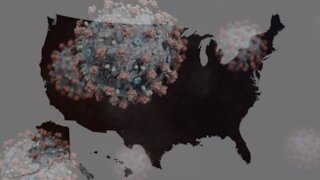The Evolution of Covid-19 Symptoms: How Each New Variant Tells a Different Story
# The Evolution of Covid-19 Symptoms: How Each New Variant Tells a Different Story
As Covid-19 continues to weave its path through global populations, each new variant brings with it a unique set of symptoms and challenges. From the initial bewildering presentation of "Covid toe" to the current wave of infections caused by the KP.2 variant, the nature of the disease has evolved significantly. Understanding these changes is crucial in our ongoing battle against the virus.
## The Early Days: Unusual and Bizarre Symptoms
In the early months of the Covid-19 pandemic, the world was introduced to a strange array of symptoms that seemed unrelated to a respiratory virus. Alongside the common signs like fever and cough, patients reported losing their sense of smell and taste, experiencing severe fatigue, and suffering from "Covid toe" – painful, itchy lesions on their feet and hands.
### The Mystery of "Covid Toe"
"Covid toe" baffled scientists and doctors alike. This condition, resembling chilblains, left many wondering how a respiratory virus could cause such symptoms. Initial hypotheses suggested an excessive immune response might be to blame, but the exact mechanism remained elusive. Interestingly, as the virus mutated, reports of "Covid toe" decreased, hinting at the virus's evolving nature and its impact on the body.
## The Rise of Omicron: A Shift in Symptomatology
As the pandemic progressed, the emergence of the Omicron variant marked a significant shift in the symptom profile of Covid-19. With Omicron and its subvariants like JN.1 and KP.2, the disease began to manifest more like a typical flu, making it increasingly difficult to distinguish from influenza without specific tests.
### The Dominance of JN.1
The JN.1 variant, a subvariant of Omicron, brought new challenges. Patients frequently reported symptoms such as headaches and gastrointestinal issues, including diarrhea. The loss of smell and taste, once a hallmark of Covid-19, became less common. This shift suggested a change in the virus's ability to infect different cells, driven by mutations in the spike protein that allowed it to evade the immune system more effectively.
## The Emergence of KP.2: A New Player on the Field
By early 2024, the KP.2 subvariant started to dominate. Characterized by distinctive mutations in its spike protein, KP.2 was dubbed "FLiRT" due to specific amino acid changes. Although it had a higher reproductive number, making it more transmissible, it was found to be up to ten times less infectious than JN.1.
### The Impact on Healthcare Systems
Despite the higher transmission rates, the impact on healthcare systems was less severe compared to earlier waves. Hospitalizations and deaths from Covid-19 were markedly lower, attributed to a combination of widespread immunity from previous infections and vaccinations. However, distinguishing Covid-19 from other respiratory illnesses like influenza became a significant challenge for primary care physicians.
## The Role of Immunity: Vaccination and Prior Infections
The interplay between immunity from vaccinations and prior infections has played a crucial role in shaping the current landscape of Covid-19 symptoms. As people have become more exposed to the virus, either through infection or vaccination, their immune systems have become more adept at handling it.
### Waning Immunity and Vaccine Boosters
However, immunity wanes over time. Epidemiologists like Denis Nash emphasize that those who remain unvaccinated or under-vaccinated, particularly those experiencing Covid-19 for the first time, are at greater risk of severe and prolonged symptoms. This highlights the ongoing importance of staying up to date with vaccine boosters to maintain protection against severe disease.
## The Future: Long Covid and Ongoing Challenges
One of the enduring concerns is the long-term impact of Covid-19, particularly the risk of Long Covid. Emerging evidence suggests that micro clots, formed as a result of the virus, could be linked to the persistent symptoms experienced by Long Covid patients. Researchers are now investigating whether these complications vary between different variants or if they are influenced more by the waning immunity from previous vaccinations.
### The Significance of Microvascular Complications
Microvascular complications, such as those affecting the kidneys, have been observed with the new JN.1 variant. These observations raise concerns about the potential for increased chronic cases in the future. As the virus continues to mutate, the medical community must remain vigilant in monitoring these developments.
## Conclusion: Adapting to a Changing Virus
The evolution of Covid-19 symptoms with each new variant underscores the virus's adaptability and the complexities of our immune response. While some symptoms have become less common, new challenges have emerged. Staying informed about these changes is crucial for both healthcare providers and the general public.
As we move forward, the importance of vaccinations and booster shots cannot be overstated. They remain our best defense against severe disease and the complications associated with Long Covid. The journey with Covid-19 is far from over, and understanding its evolving nature will be key to navigating the future.
The story of Covid-19 is one of constant change, requiring adaptability and resilience from us all. By staying informed and vigilant, we can continue to protect ourselves and our communities from this ever-evolving virus.
-
 3:04
3:04
WXYZ
2 years agoAsk Dr. Nandi: Cases of a dangerous COVID -19 variant are 'rapidly increasing' in US, expert says
25 -
 32:40
32:40
vejonhealth
27 days agoVIRAL SEPSIS: A New Presentation of the Covid Virus?
6133 -
 1:39
1:39
SmokeyHardwick
25 days agoTwo New COVID Variants Named ‘FLiRT’ Reportedly Spreading Across the U.S.
136 -
 1:14
1:14
Cryptostreets
18 days agoStartling Findings – Entirely New COVID-Related Syndrome Discovered
55 -
 16:58
16:58
ProgressiveTruthSeekers
26 days agoThe Truth About Covid Vaccines - Encouraging Movement
1.41K4 -
 12:20
12:20
USAFrontlineDoctors
27 days agoIS BIRD FLU THE NEXT COVID?
6844 -
 12:59
12:59
CharlesEWright
1 month agoTedros: COVID-19 was the FIRST DISEASE X
7 -
 2:04
2:04
DiddyNews53
1 month agoPopular Covid jab reveals rare deadly side effect?
78 -
 23:11
23:11
vejonhealth
18 days agoDermatomyositis Outbreak Linked to Covid/Vax - SHOCKING Discovery!
512 -
 1:14:38
1:14:38
FLCCC ALLIANCE
22 days ago $14.09 earnedThe Pathology of Blood Clots from COVID “Vaccines”
10.2K7